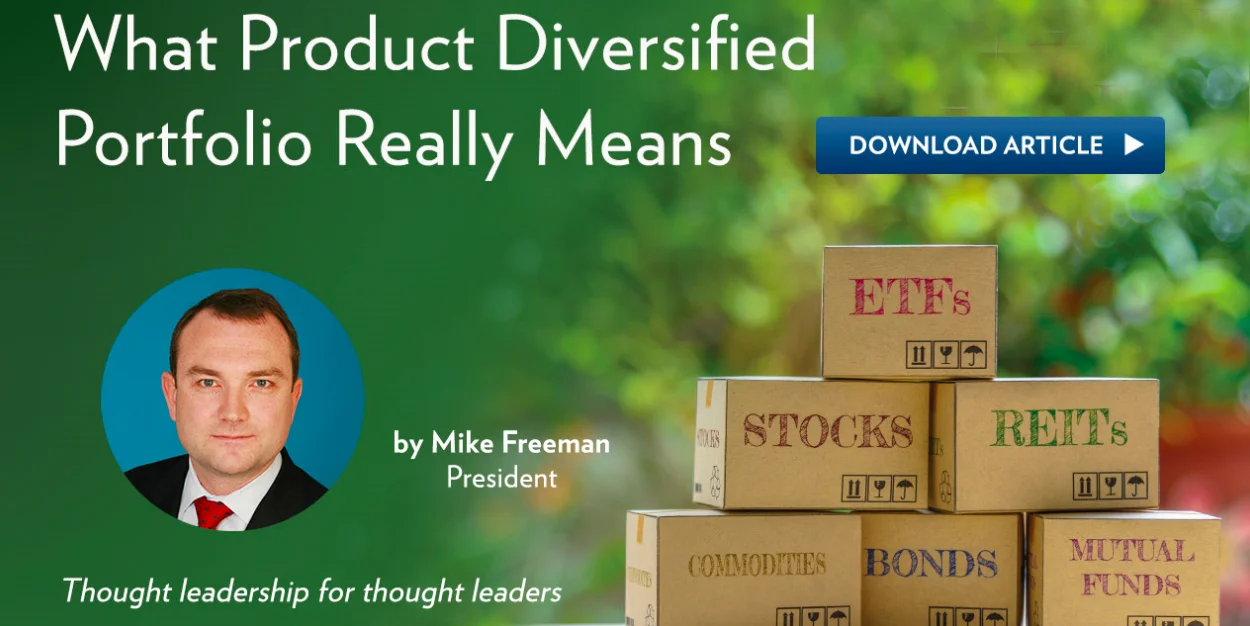What a "Product Diversified" Portfolio Really Means

Over the last 12 months, we have seen the fed funds rate increase by 4.5%, directly affecting equity and bond markets. Yields have finally
risen, and we are now actually getting a return on our cash in a savings account or just buying treasuries. This is a good thing for Americans.
But inflation has run rampant and real returns on cash are still negative. Volatility on the equity markets has become very turbulent. What does all this mean for your product shelf?
If you are looking for growth and have the stomach and financial means to invest for the long term, traditional asset management products
such as funds or ETFs are still the way to go. This is most effective through financial planning, to limit the natural human reaction to market
corrections (the need to sell now and sleep at night).
For clients looking for income, there is still no better product than an annuity to produce the income most people need in retirement.
Withdrawing 3 to 5% from your managed account won't cut it for most people. Many have tried and failed; the Covid correction, dot com bust,
and financial crisis, history will repeat itself. Unless you can self-insure (code work for the rich), you need to gain insurance from someone else,
similar to your car, home, or life insurance policy.
Now let's talk about the remaining group of client needs and possibly most people. Looking for growth but are afraid to make a mistake, get embarrassed, or have a visceral reaction to losing money. The balanced portfolio, I'm not talking about a 60–40 portfolio, or whichever your preferred allocation is, but a genuinely product-balanced portfolio. Different asset classes behave differently, except last year when they all went down, but product types can offer better diversity.
-
Protected Growth — Structured Product and Annuity do a good job at trading off some of the upside to protect on the down side.
-
Uncorrelated Assets — Alternative Investment can really diversity your performance and risk. Albeit in real assets or a market neutral strategy that does not ride the index but tries to perform in all markets. Contrary to popular belief, these products are consistent performers but are not home run hitters.
-
Time in the Market — Traditional Asset products are best served by time in the market, not timing the market. These investments
should be 7+ years out. So what to do about nearer term goals or a client's anxiety about market corrections? Try diversifying into some protected growth or market neutral strategies.
-
Leaving a legacy and protecting your paycheck — Life insurance is still the best way to accomplish this for clients. It is also the best way to truly understand your clients needs, wants, and desires. Did someone mention a financial plan?
Showing a client how all these pieces fit together is our job. Riding the index for the past decade with zero interest rates is a thing of the past -time to earn our keep again.
MORE INFORMATION: For more information about the author or DDW's products and services, contact Mike Freeman
For more information about the author or DDW's products and services, contact Mike Freeman
973.567.6600 | michael.freeman@duediligenceworks.com
